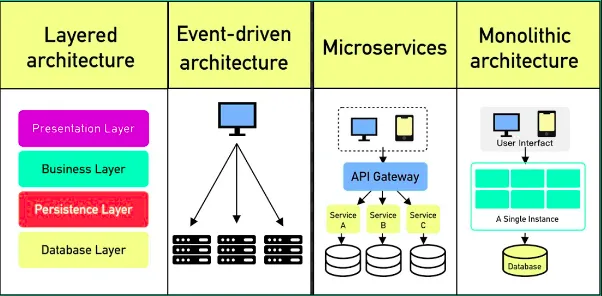Published
-
Microkernel Architecture Pattern

Microkernel Architecture?
The microkernel architecture, also known as a plug-in architecture, is a software design pattern where a system is split into two main parts: the core system (the microkernel) and plug-in components.

1. Core system
The core system handles the basic, essential functions that are common for most users.
2. Plug-in components
Plug-in components add extra features and functionality. These are separate from the core and can be added or removed without changing the core system.
Real-World Use Cases
1. Web Browsers
- Chrome
- Core: Basic browsing, rendering
- Plug-ins: Ad blockers, password managers, themes
- Firefox
- Core: Navigation, security
- Plug-ins: Developer tools, privacy extensions
2. Content Management Systems
- WordPress
- Core: Content creation, user management
- Plug-ins: SEO tools, e-commerce, forms
- Drupal
- Core: Content organization, user roles
- Plug-ins: Community features, media handling
Advantages
- Flexibility: You can add or remove plug-ins easily without needing to change the main system.
- Easier Updates: Since each part is separate, updating or testing a plug-in is simpler and faster.
- Customizable: You can build a system with only the features you need by choosing specific plug-ins.
Disadvantages
- Limited Scalability: This architecture works well for smaller systems but may not handle very large, complex applications well.
- Complexity: Managing plug-ins, their connections, and ensuring they work together smoothly can be tricky and require careful design.
Key concepts of the Microkernel Architecture pattern

- Registry: A system that keeps track of all available plug-ins and helps the core interact with them.
- Contracts: Agreements between the core system and plug-ins on how they communicate and share data.
When to Use Microkernel Architecture
Good fit for :-
- Applications needing high customization
- Systems with constantly evolving features
- Products that cater to diverse user needs
- Development platforms supporting plugins or extensions
May not suit :-
- High-performance systems requiring speed and efficiency
- Simple, static applications with fixed functionality
- Resource-constrained environments with limited memory or processing power
- Systems that require tight integration across all components
Some of Software Architecture Patterns
Some of Software Architecture Patterns
